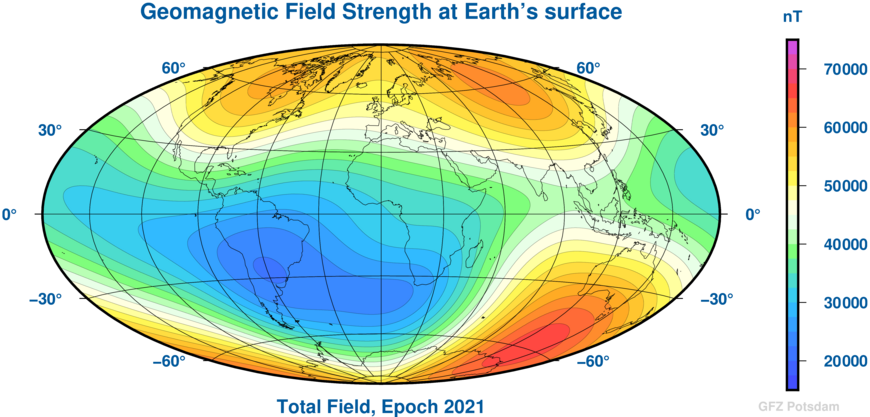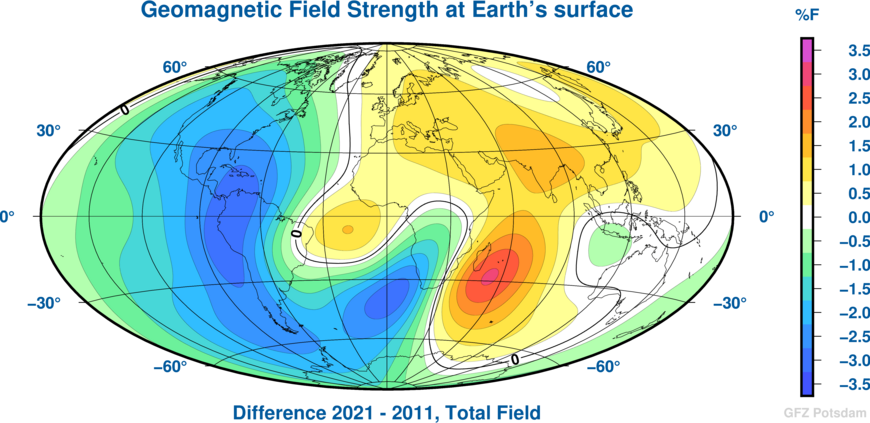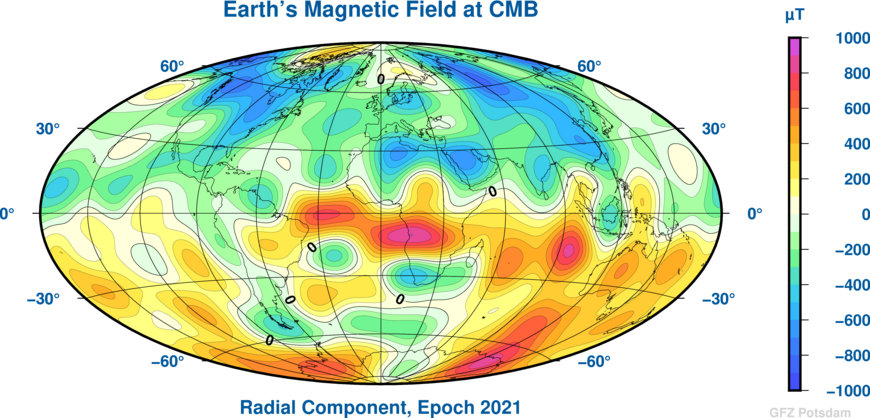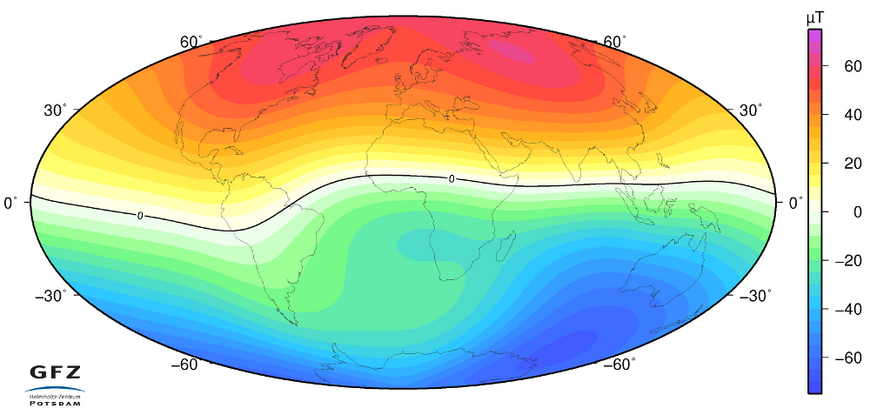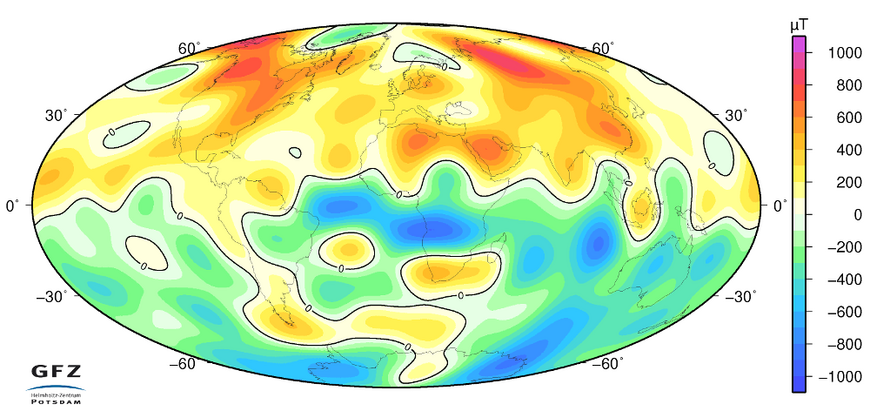To fully describe the geomagnetic field it is necessary to either measure the intensity and two angles of direction or three orthogonal components. The angles are declination (the deviation of the local geomagnetic field lines from geographic north) and inclination (the angle of intersection with the Earth's surface). Orthogonal components are commonly chosen to be X, Y and Z for the directions towards geographic north, east and vertically down, respectively. Common units used to describe the geomagnetic field are nanoTesla (nT=10-9T) or microTesla (µT=10-6T) , with Tesla in fact being the unit for magnetic flux density.
When a measurement of the geomagnetic field is taken at any given point and time, the resulting value contains the superposition of fields having different origins and varying in magnitude: the core field, the lithospheric field, the external fields and the electromagnetically induced field. In 1838 Gauss, using spherical harmonic functions, developed a method to describe the geomagnetic field globally, providing a rough separation between internal and external contributions to the geomagnetic field. Geomagnetic field models based on spherical harmonics are still widely used, but due to the multitude of sources, a strict separation of all contributions is not feasible. The following figure shows a map of the field strength distribution from such a model of the core field calculated from data from the CHAMP and Swarm satellites and from ground based geomagnetic observatories. An interesting feature of the core field is the so-called South Atlantic Anomaly. This is a large area of very low field intensity (less than 20µT) over South America, the southern Atlantic and southern Africa.
The core field is also subject to temporal variations, known as secular variation. From CHAMP(2006) and Swarm (2016) data we can see that the field has been decreasing further in parts of the South Atlantic Anomaly by up to 3.5 during the past 10 years. However, it is obvious that the magnetic field does not change uniformly over the Earth. While the overall strength of the dipole field is decreasing, there exist a few regions where the field strength is increasing, e.g. over the Indian Ocean and Europe.
Modeling the secular variation on characteristic timescales of the order of a few decades, can be significantly improved if we take advantage of all the available magnetic satellite data. It is obvious that the magnetic field does not change uniformly over the Earth. While the overall strength of the dipole field is decreasing, there exist a few regions where the field strength is increasing. An extremely strong decrease is seen in two areas, in the South Atlantic and in the Meso-American region. From the 2011 and 2021 model data, we see that the field strength in the South Atlantic region has decreased by up to 3.5% over the last 10 years (see the following figure).
The field component used to probe the structure and dynamics of the Earth's core is the vertical component. Considering the mantle as an electrical insulator, the vertical component can be extrapolated to the core-mantle boundary, where its structure is more complicated than at the Earth's surface (see figure below). Distinct patches of reversed magnetic flux at the poles and below the South Atlantic region can be identified, which can be related to the present day field decrease. The most prominent feature in this respect is the growing patch of reverse magnetic polarity beneath the South Atlantic region.


